First race 1982 | Laps 70 | |
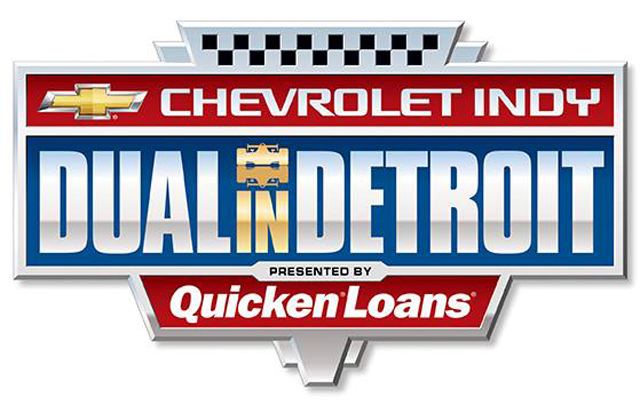 | ||
Location The Raceway on Belle Isle
Detroit, United States Corporate sponsor Lear Corporation
Chevrolet Distance 164.5 miles (264.737 km) Previous names Detroit Grand Prix (1982–1987)
EniChem Detroit Grand Prix (1988)
Valvoline Detroit Grand Prix (1989–1991)
ITT Automotive Detroit Grand Prix (1992–1998)
Tenneco Automotive Grand Prix of Detroit (1999–2001)
Detroit Indy Grand Prix Presented by Firestone (2007–2008)
Chevrolet Detroit Belle Isle Grand Prix Presented by shopautoweek.com (2012)
Chevrolet Indy Dual In Detroit Presented by Quicken Loans (2013)
Chevrolet Dual in Detroit presented by Quicken Loans(2014-2016) | ||
The Chevrolet Detroit Grand Prix Presented by Lear Corporation is a IndyCar Series race weekend held on a temporary circuit at Belle Isle in Detroit, Michigan. The race has been held from 1989 to 2001, 2007 to 2008, and since 2012. The current format of the event is a unique "doubleheader" weekend, which includes two full, points-paying races, one each on Saturday and Sunday. In addition, since 2012, the event has been scheduled for the weekend immediately following the Indianapolis 500.
Contents
- Formula One
- CART
- Demise
- IndyCar Series
- Belle Isle
- Support race winners
- CART PPG Indy Car World Series Renaissance Center
- CART PPG Indy Car World Series Belle Isle
- CART FedEx Championship series Belle Isle
- IRL IndyCar Series Belle Isle
- References

The origins of the event date back to the Formula One Detroit Grand Prix on the Detroit street circuit. The CART series began headlining the event in 1989, and in 1992, the race moved from downtown Detroit to Belle Isle, a park situated on an island in the Detroit River. The IndyCar Series took over the race beginning in 2007. The race has been supported by Indy Lights and Formula Atlantic and top-level sports car series such as the Trans-Am Series and the ALMS.
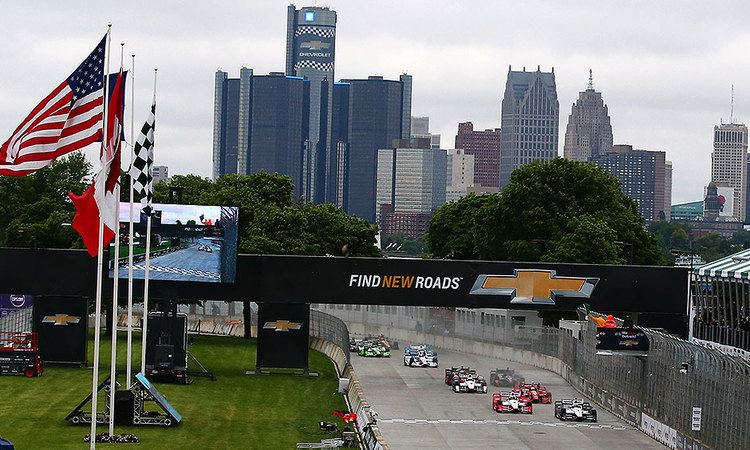
Open wheel racing in Detroit dates back to the 1920s–1950s, when AAA held the Detroit 100 at the Michigan State Fairgrounds Speedway. AAA also held one five-mile (8 km), non-championship race at Grosse Pointe in 1905.
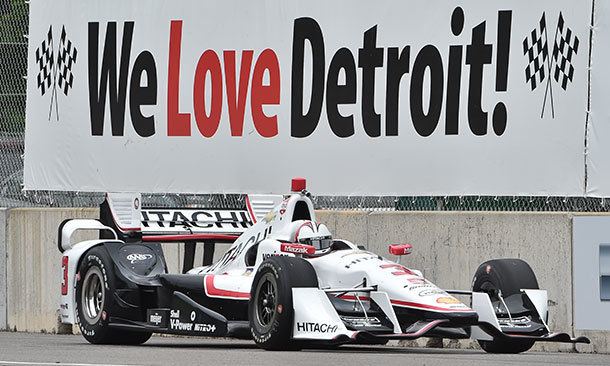
Formula One

The race dates back to 1982 when it was a Formula One World Championship event held on the Detroit street circuit encompassing the Renaissance Center. The original circuit was 2.493 miles (4.012 km) with seventeen corners and proved to be even slower than Monaco. The rough, demanding course included a railroad track crossing and mimicked Monaco, with a tunnel on the main straight. While officially the Detroit Grand Prix, it was referred to as the United States Grand Prix East because there were multiple Grand Prix races in the U.S. at the time. By the time of the 1988 race, FIA, the governing body of Formula One, had declared the street circuit's temporary pits and garages were not up to the required standard.
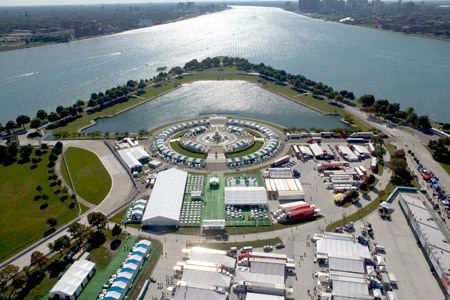
For 1989, race organizers planned to move the race to a new temporary circuit on Belle Isle, a city park in the Detroit River. Along with the criticism of the downtown circuit, local developers were planning to begin construction along portions of the course. The relocation plan was immediately met with stiff local opposition, both public and political. Even though the circuit would be temporary, permanent garages and pit facilities would have had to be constructed, at significant expense, and at the odds of conservation groups. In October 1988, the plan was scrapped. Formula One left Detroit permanently, with the U.S. Grand Prix moved to Phoenix.
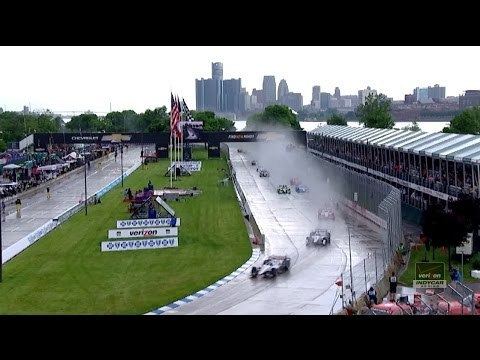
It was in Detroit in 1983 that Italian driver Michele Alboreto drove his Tyrrell 011 to victory in the US Grand Prix East in what would prove to be the 155th and last ever F1 win by the Cosworth DFV V8 engine.
CART
For 1989, the race in Detroit was replaced by a CART event. Instead of moving to Belle Isle, CART utilized a slightly modified version of the downtown Renaissance Center street circuit. The chicane on the main straight was eliminated - something the F1 drivers had been calling for since the first race in 1982. The CART race was held on this 2.52-mile (4.06 km) layout for three years. As had been the case in the event's Formula One days, competitors and fans continued to pan the course, criticizing it for its bumpiness, poor visibility and overall poor layout. In addition, promoters considered the downtown circuit a money-loser, and claimed it was suffering from poor television ratings with its Father's Day date (up against the U. S. Open).
Beginning in 1992, the race was moved to a new temporary course set up on Belle Isle. The move revived a conceptual plan for the Formula One event from four years earlier. One major difference that made Belle Isle viable for CART - and acceptable to locals - was that permanent Formula One style garages and pits were not required by the sanctioning body. The race was also moved up a week, and for 1992, was the first race after the Indianapolis 500 (displacing the traditional Milwaukee). The first layout measured 2.1 miles (3.4 km). Almost immediately, the new course was criticized by drivers for being narrow, slow, and lacking passing zones. It was complemented, however, for its smoothness - a sharp contrast to the rough, manhole-dotted downtown circuit. Fans' opinions were mixed, as sightlines were improved over the downtown circuit, but access to the island was difficult, and the racing was not much better.
In 1998, the course layout was modified to eliminate the slow "Picnic Way" segment and series of corners. Instead, the course continued straight along Central Avenue to create a long, fairly-wide straightaway leading into a competitive passing zone. The track then measured 2.346 miles (3.776 km). The revised layout was praised by competitors as being an improvement over the original (1992-1997) course. However, pavement transitions from asphalt to concrete were being blamed for an increase in incidents due to slickness.
The 2000 event saw young Brazilian Hélio Castroneves score his first Champ Car victory for Marlboro Team Penske. After his victory lap, he stopped on the frontstretch and climbed the catch fencing in an apparent effort to share his joy with the spectators. Helio became known as "Spider-Man" because of this celebration, which has been repeated in his later victories.
Support races for the Detroit Grand Prix included the Motor City 100 for the SCCA Trans-Am Series, and the Neon Challenge celebrity race. Scenes from the film Driven were filmed during the race weekend in 2000.
The event, along with the Michigan 500, provided two CART races in southern Michigan annually.
Demise
Even though the track was a temporary street course, it became known as The Raceway on Belle Isle. As the years went by, the track was increasingly criticized for its narrowness, poor access, and its overall uncompetitive nature. It gained a reputation of being the "worst" and "least popular" venue on the entire schedule. In 1997, it was noted that race winner Greg Moore started seventh and did not pass a single car competitively out on the track for position all day. Participants also disliked the facility because of its lack of paved areas for support activities. Paddock areas were often muddy and unable to accommodate the teams.
After the 2001 race, CART's contract with Belle Isle expired. Attendance had been noticeably slipping. Negotiations to continue the event went over the summer, but eventually stalled. Organizers briefly entertained an idea to return to the old downtown circuit, but those plans were quickly scuttled. The series chose to drop the race for the schedule and the event went on hiatus.
IndyCar Series
In 2006, Roger Penske spearheaded talks to revive the race for 2007 as part of the ALMS and IndyCar Series schedules. Penske had recently experienced tremendous success as head of the Super Bowl XL Detroit Metro Host Committee. On September 29, 2006, it was announced that the Detroit Indy Grand Prix would return as the tenth race of the ALMS's 12-race season and penultimate race of the IndyCar Series' seventeen-race schedule.
To improve access to the track, a park-and-ride system, similar to what was used at Super Bowl XL, was implemented. Further paddock and track work was completed before the race. The 2007 event attracted a strong crowd, and was considered a success. It was held again in 2008. During this period, the event utilized the original (1992-1997) course layout.
On December 18, 2008, the scheduled race for 2009 was canceled. The ongoing automotive economic crisis, and its impact on the Detroit-area was the primary reason. Roger Penske did not rule out a return in the future.
For the 2012 season, the race on Belle Isle was revived for second time. Starting in 2013, the race was hosted as a unique "doubleheader" weekend. The race weekend would consist of two separate, points-paying races, one each on Saturday and Sunday. The races were treated as separate events, with separate qualifying, full championship points, and the results of the first had no bearing on the lineup for the second (as had been the case with some previous "twin" race formats). Beginning in 2013, the race also returned to the "long" course (1998–2001 layout).
Belle Isle
Support race winners
^A Winner Wally Dallenbach, Jr. was disqualified due to car being underweight.
